Hi everyone! I hope your enjoying the weekend.
Today I wanted to talk about something a bit different, something that has been quite important to me during the past year: voxel worlds! I’ll talk a bit about Minecraft, modding, Minecraft alternatives and, finally, programs that let you create voxel assets and even entire voxel games in an easy and user-friendly way. Today it’s all voxels, voxels, voxels. So let’s get to it!
Modded Minecraft, a constantly expanding experience
I must admit that I was late to the Minecraft party. I knew of it, of course (who wouldn’t? It’s the best selling video game in history after all), but I didn’t see the appeal of it, mostly because it’s just EVERYWHERE and it’s owned by Microsoft and its original creator is meh, so I didn’t pay it any attention for the longest time.
Like many others, it was after seeing people play it on streams and YouTube videos that I saw its potential. One day, I thought to myself “Hey, maybe I will like this after all” and gave it a try, and oh boy, that’s a pit from which I hope to never climb out.
I got Minecraft almost exactly a year ago. Since then, I’ve played aproximately 500 hours of it (which is a lot, considering that I usually play it only for a couple of hours a day), distributed through half a dozen different worlds. During this time, I’ve learned to love the voxel aesthetic, to which I had never paid much attention to before, and what it can bring to the table, both for players and for creators. I’ve also come to realise how important a wide and varied modding community can be for sandbox games, where players appreciate being able to customise the game to the smallest detail, and I’ve had infinite amounts of fun playing around with mods (and admitedly some frustration when trying to get them to play nice with each other, but that’s just to be expected).
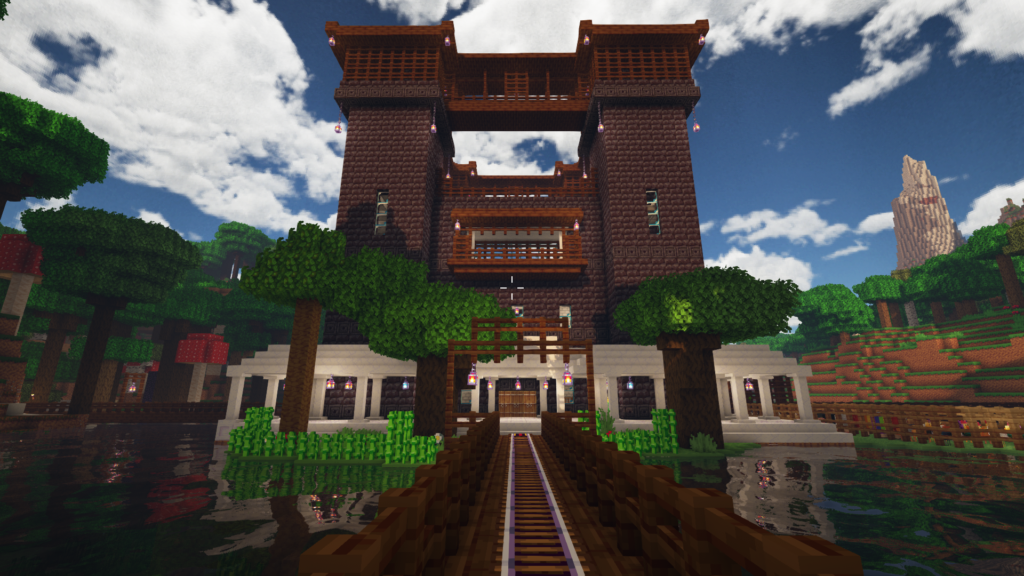
I don’t think I’ve played more than an hour or two of vanilla Minecraft, for a very simple reason: in my opinion, what really makes Minecraft shine is its modding community. I’ll explain it with a metaphor: vanilla Minecraft is like the base of a pizza, a really, really nice one. It’s an amazing ingredient, pizza wouldn’t be pizza without it, but you wouldn’t eat it on its own: it needs the right toppings, sauce or spices to come to its full potential. That’s where mods (toppings) and resource packs (sauces and spices) come into play.
The Minecraft mod and resource library is the most insane, incredible thing I’ve ever seen in the videogame world. The sheer variety of it, the fact that most mods can work well with each other against all odds, the way they expand the base game in all directions and provide customization options for all kinds of gameplay, the generosity of it all… it blows me away. I can’t put Minecraft down because, whenever I get tired of playing it, I can just go have a look at the mods available and choose an entirely new modset for my next playthrough, where I’ll have completely different creatures, biomes, tools, building materials, graphics and UI. Modded Minecraft is an ever-expanding game of games and I love it.
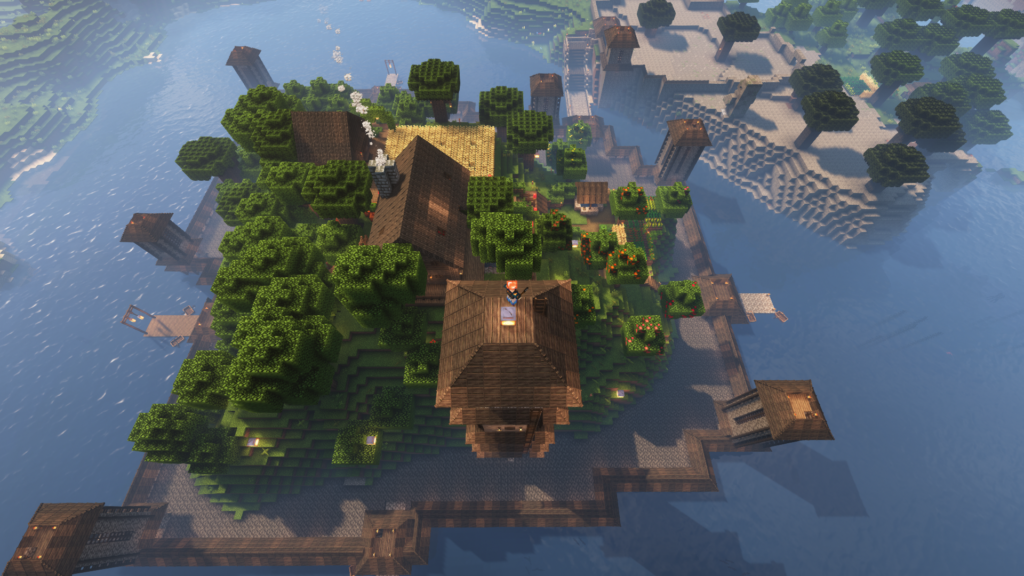
But isn’t this too good to be true?
Modded Minecraft is amazing, but it still suffers from a huge, insurmountable drawback: it’s privately owned (by a big corporation no less), which means closed source, which means that mod integration isn’t the best, which means low optimisation and, also, that this incredible wealth of community-made resources (mods, modpacks, resource packs, etc.) is, in the end, all tied to a product that doesn’t belong to the community. Which isn’t exactly fair or future-proof.
Minecraft Bedrock, Microsoft’s own take on Minecraft, built from scratch, is a much more closed ecosystem than the original Java version: it has its own micro-transactions and inbuilt marketplace and it’s much harder to mod. Amongst many of us, there exists the (perfectly reasonable) fear that Microsoft will eventually shut down the Java version and keep only Minecraft Bedrock, which would basically kill the modding community as it stands today. The only reason they haven’t done so already is probably the fact that most content creators who play Minecraft use heavily modded Java versions, and those content creators bring a lot of visibility and traffic to Minecraft and get lots of people (not only children, but also adults, like myself!) to buy it and try it out. Still, it’s unclear if this Nirvana of “buy the game once, get infinite mods for free forever” will be sustainable in the future, and I wouldn’t exactly bet on it.
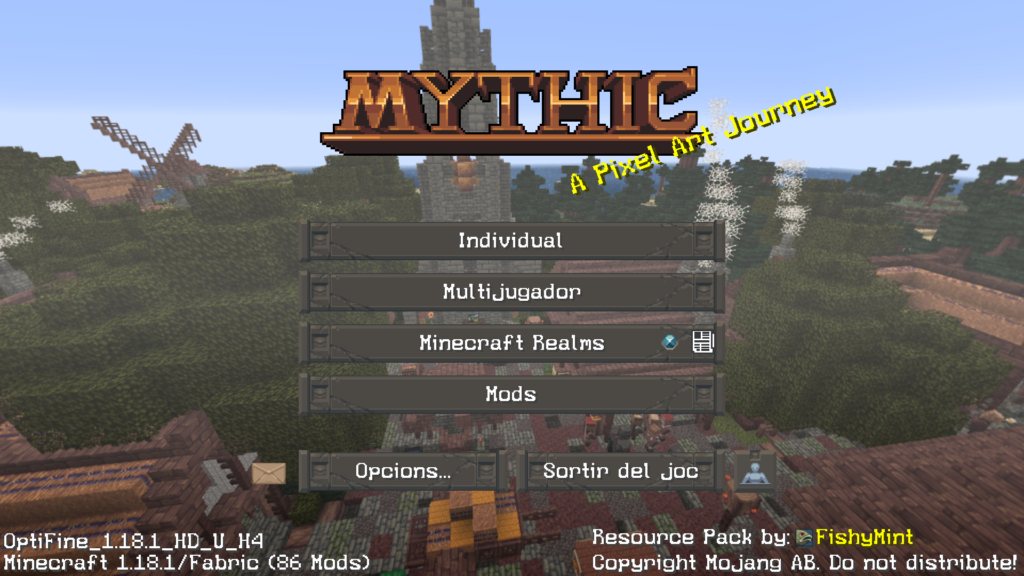
For this reason, personally, I’m rooting for an open alternative to eventually replace Minecraft down the road. This won’t be happening any time soon, I don’t think, but I believe that eventually, once such an alternative becomes robust enough, many content creators, modders and players will see the benefit of having better control over their virtual worlds and make the switch. Hopefully. Or perhaps there will come a point when they won’t really have a choice…
So… are there any alternatives?
My first approach to a somewhat “Minecraft-ish” experience was not Minecraft itself, but an open-source Minecraft clone called Minetest. Minetest has been around for a long time, since 2011 according to Wikipedia, and right now it’s the best candidate for a fully-featured open Minecraft alternative in my opinion. It still has a ways to go, particularly on the visuals: for example, it desperately needs a UI overhaul (this is the main reason why I don’t play it, to be honest) and proper shadow/shader support. However, after these years all the basic functionality is there, and the Minetest game Mineclone, which is an almost exact replica of Minecraft, has most of the features of vanilla Minecraft already present and can be an excellent free replacement for educational purposes, for example. It also has the advantage of being better optimised than the original Java Minecraft and allowing for higher worlds (Minetest’s block height limit is 60000, while Minecraft’s latest version is aproximately 400 blocks high. The difference is… something).
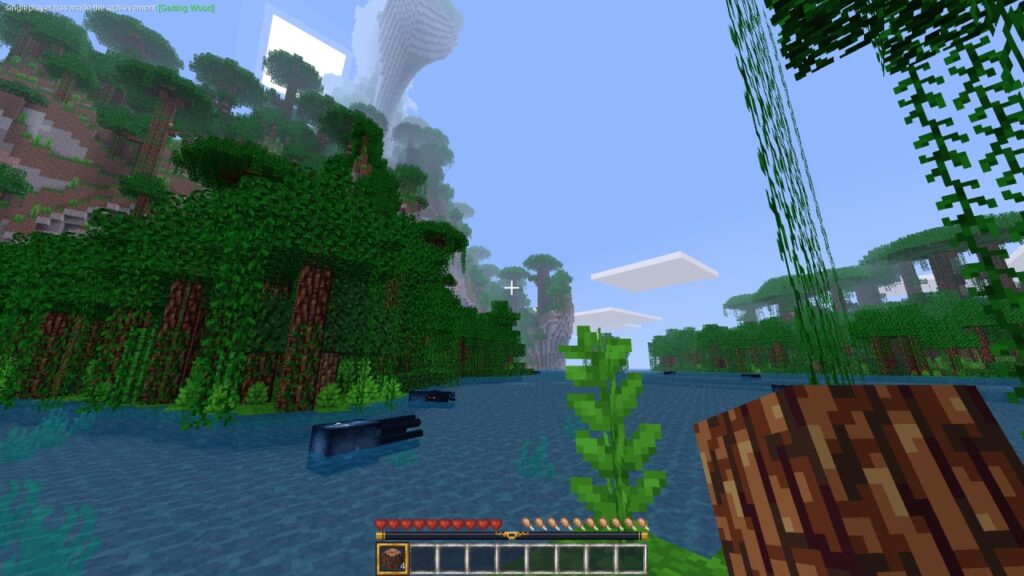
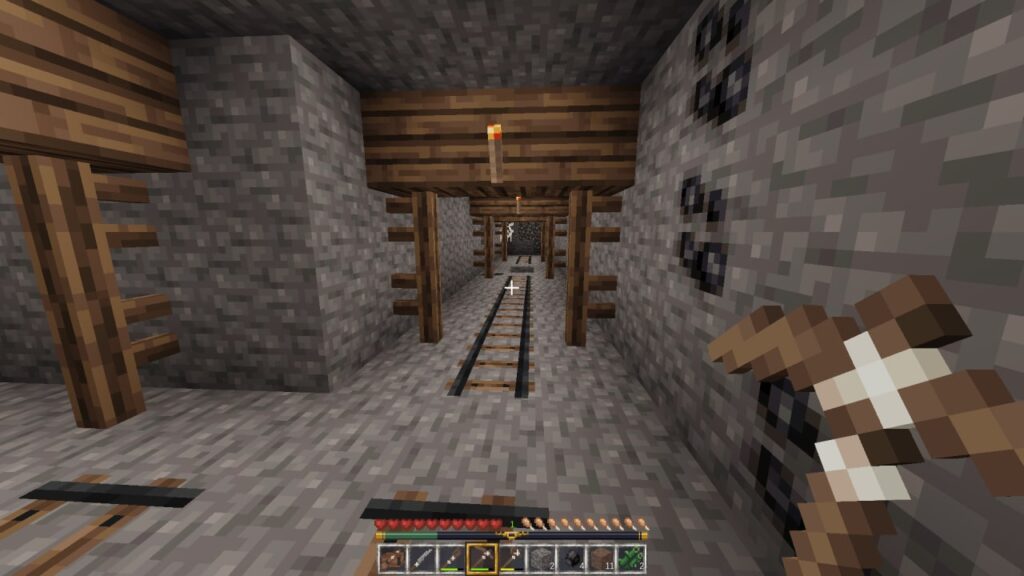
The Minetest team is finally working on improving the UI and on implementing shadows, which is excellent news, and there’s also a quite impressive library of Minetest games and mods available already, so the project is definitely headed in the right direction. I’ll keep an eye on it and you should, too!
Perhaps it will be Minetest, perhaps it will be another project, but I sincerely hope that we get a fully featured open-source Minecraft alternative sooner than later.
Regarding commercial clones of Minecraft, most of them aren’t of much interest, but I would like to give a shoutout to the Vintage Story team. Vintage Story is a voxel game inspired by Minecraft, made by former Minecraft mod creators, which focuses much more on the “survival” aspect of the game and turns it into a more immersive, detailed, hardcore experience. It’s not my preferred kind of gameplay (I fit more into the “easygoing fantasy-mining-building” part of the Minecraft userbase), but I’ve been having a lot of fun watching Vintage Story playthroughs and the game is incredibly solid, well-crafted and constantly updated. It also has interesting lore and a horror/lovecraftian aspect to it that makes it special and separate from Minecraft’s more cute, cartoonish aesthetic. If that sounds like your cup of tea, go have a look at it!
If you know of any other interesting Minecraft clones, please let me know in the comments.
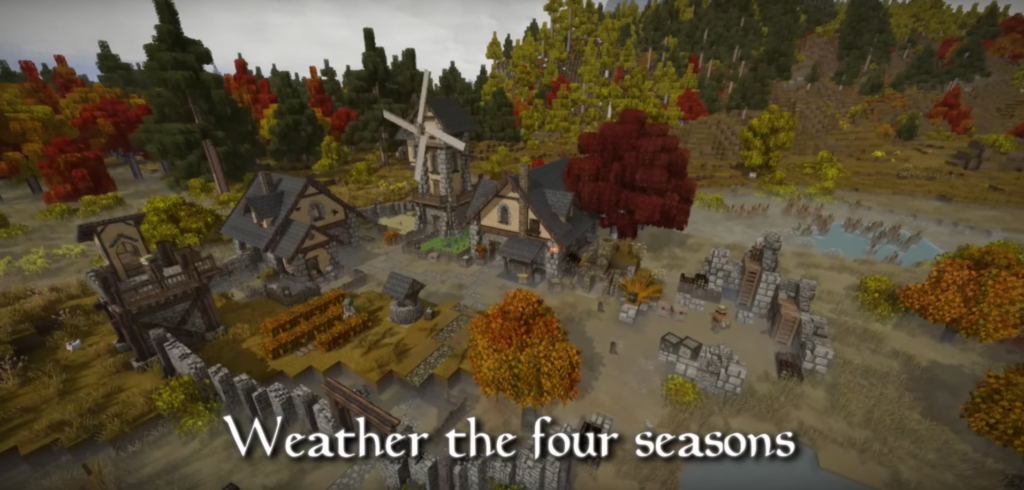
I love voxel characters and worlds… how do I make my own??
Minecraft, Minetest and other such voxel games aren’t the beginning and end of voxel world creation. Voxels aren’t as popular amongst game devs as pixel-art, but there’s already many tools available that allow you to create voxel assets and even entire voxel worlds with relative ease. In particular, I’d like to mention two tools to create voxel assets and one tool to create voxel games from scratch that I find interesting and user-friendly.
If you want to make characters, items, environments, etc. by using voxels, by far the most popular tool available is MagicaVoxel, a free tool by ephtracy that has been in development for many years and is really feature-complete. You can make truly intricate voxel art – it’s incredible the amount of detail you can get when you create a high-enough resolution voxel piece!
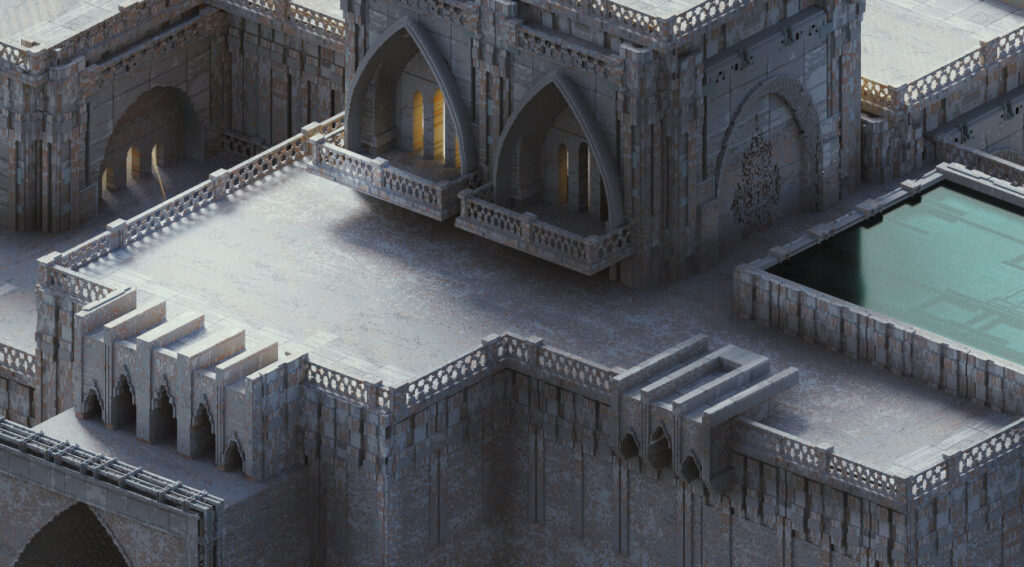
For less flexible but much easier voxel asset creation, I find that Kenney’s Kenney Shape is great and very cleverly designed. It allows you to create voxel art by drawing a pixel-art piece and assigning variable “depths” to different areas of it, to get a resulting 3D model. The software isn’t free but it’s very affordable, at a price point of 3,99$ currently. You can do no wrong with Kenney-made software.
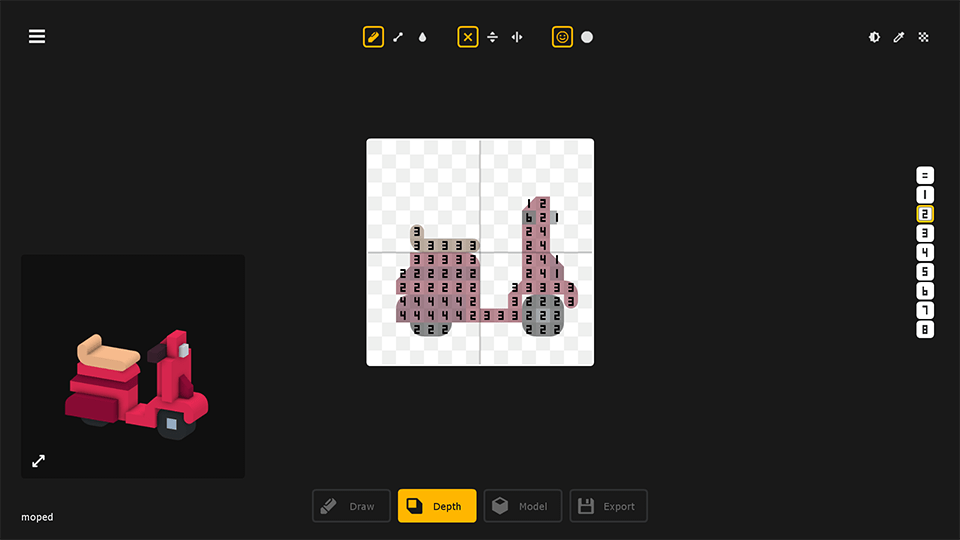
Finally, I wanted to talk about a tool that I find really fascinating and that isn’t discussed enough in my opinion. I’m talking about RPG in a Box, a fully-featured game engine created by Justin Arnold, built on top of Godot engine. RPG in a Box is a passion project which has been in constant development for the past seven years and already has a pretty impressive feature set, allowing you to create adventure and RPG games using voxel assets that you can make directly in the engine or import from MagicaVoxel. Besides voxels, it can also use pixel-art 2D sprites as characters and objects, à la Paper Mario.
RPG in a Box supports different camera types (first person and many variations of third person), which lets you make games in 3D and also in faux-2D. In current versions, movement is grid-based, but right now Justin is working on incorporating free movement, which will allow for a more Minecraft-like first person experience. I’m really looking forward to it!
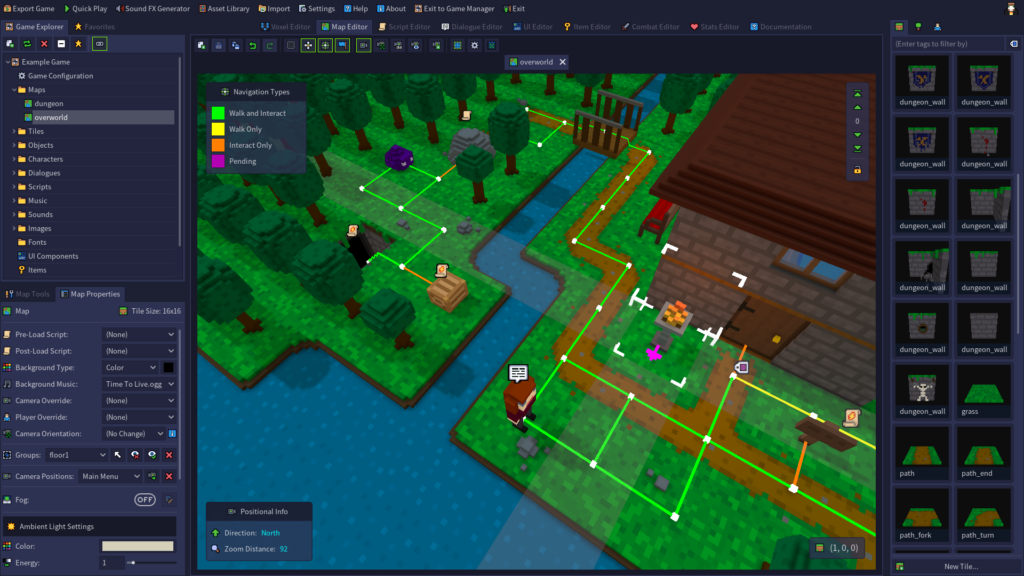
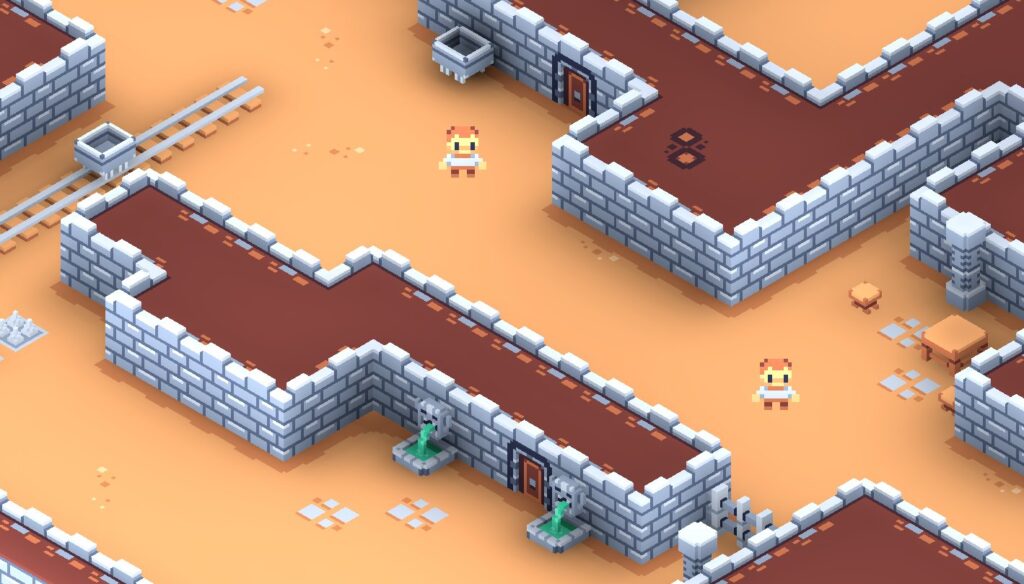
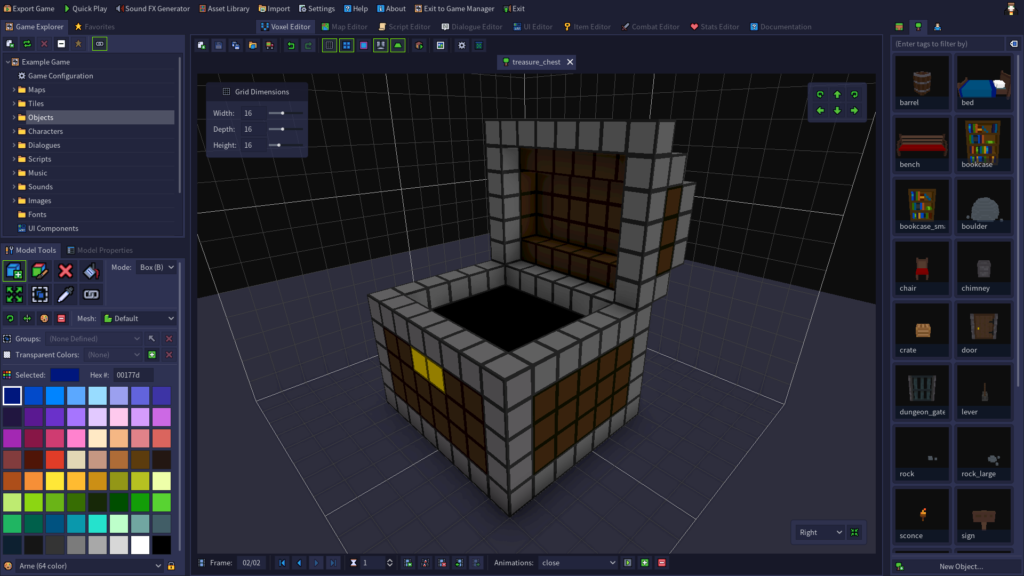
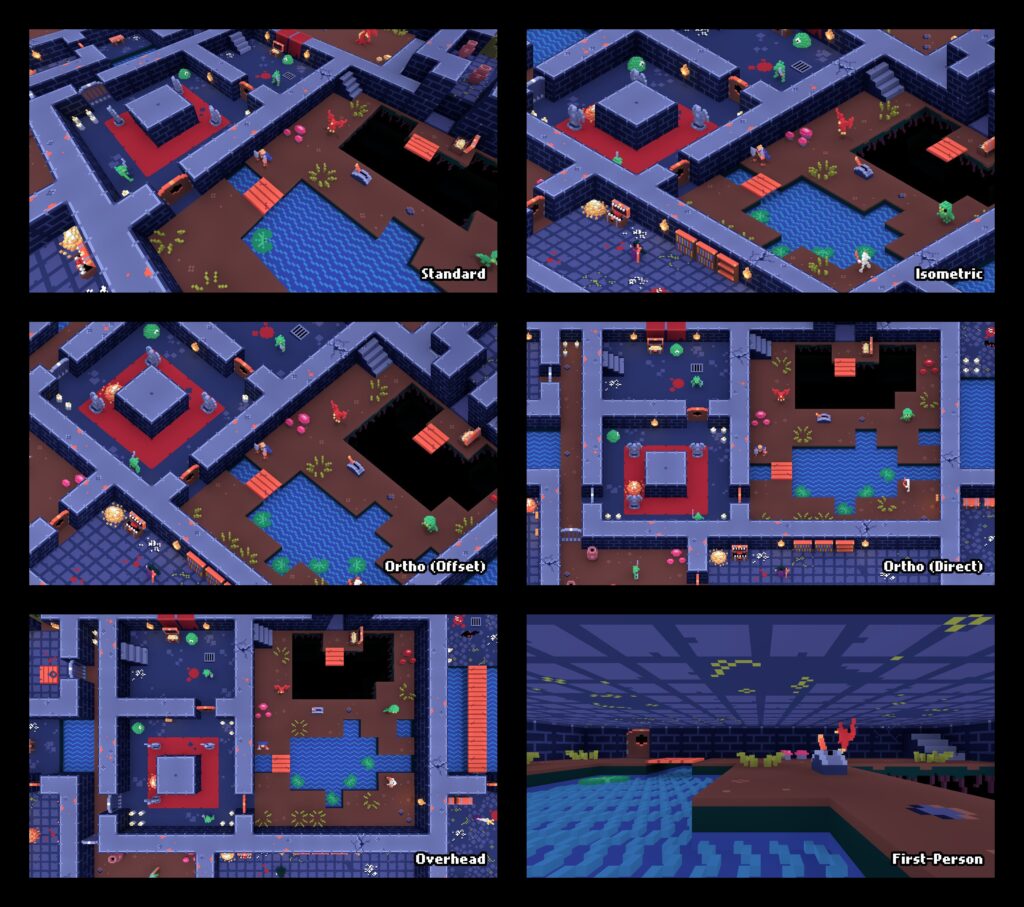
RPG in a Box is user friendly and with a growing library of tutorials available (for example, a beginner-friendly tutorial series has just launched featuring the new engine mascot, Stumpy the Squirrel). The engine is affordable, at a price point of 29,99$, and you’ll be supporting an indie creator by purchasing it. There’s also a fully-featured free demo of the engine available, where the only limit is that you can only create two small maps, in case you want to try it out first. If you’re interested in creating voxel worlds, I really recommend that you give it a try!
I’m personally really looking forward to playing with it.
Voxels, voxels, voxels
I love voxels! There’s something fascinating about them – they’re easier to build and less computationally taxing than regular 3D models, and they engage a part of our brain that likes to keep things simple and stylised and leave details to the imagination, much like pixel-art but in a three-dimensional form. I’m very excited for the future of independent projects like Minetest, Vintage Story and RPG in a Box.
Let’s keep creating and inhabiting voxel worlds together 💜
Have a nice October and best wishes,
pingudroid


Leave a Reply